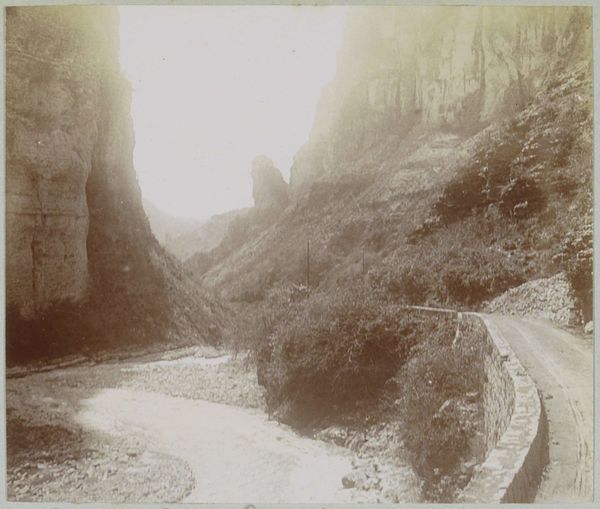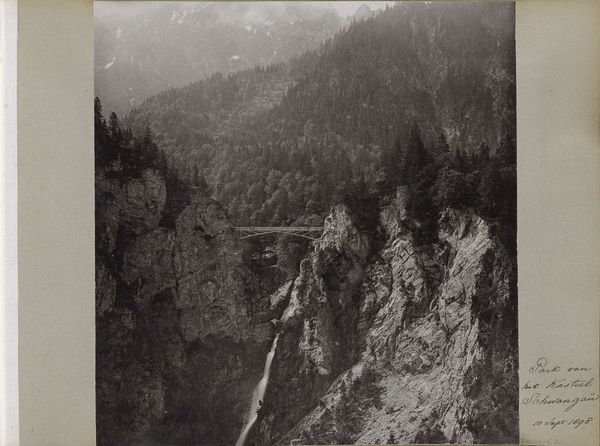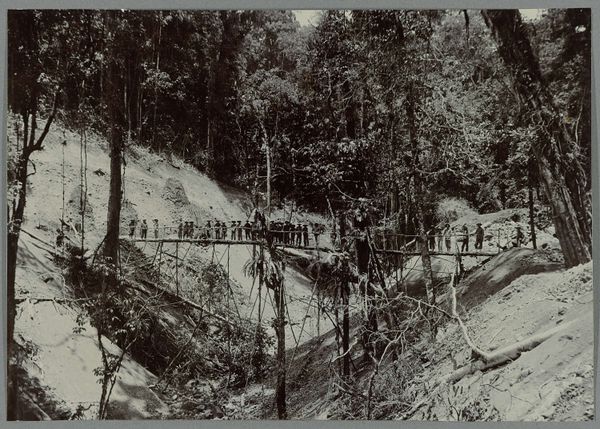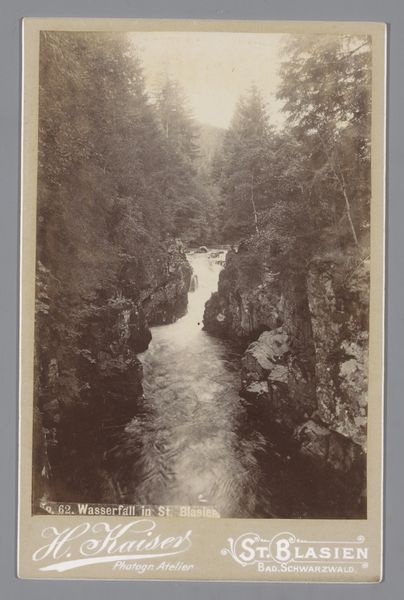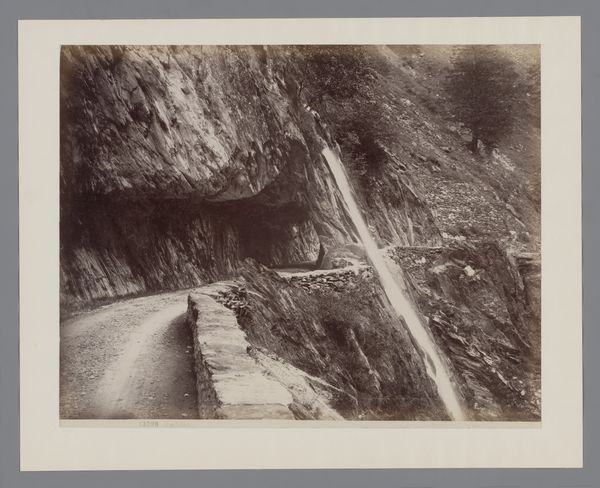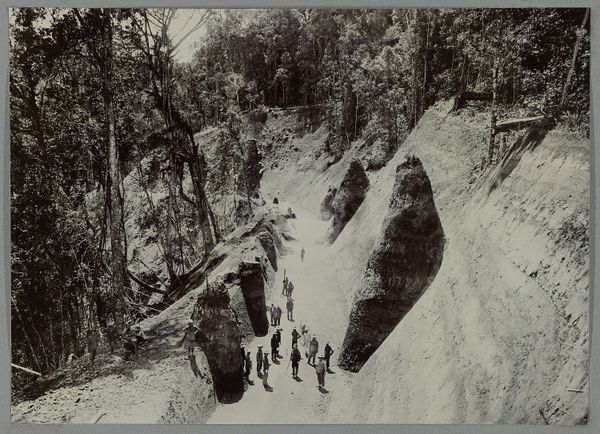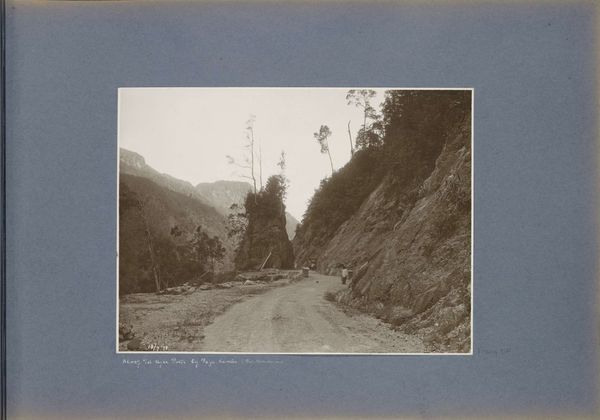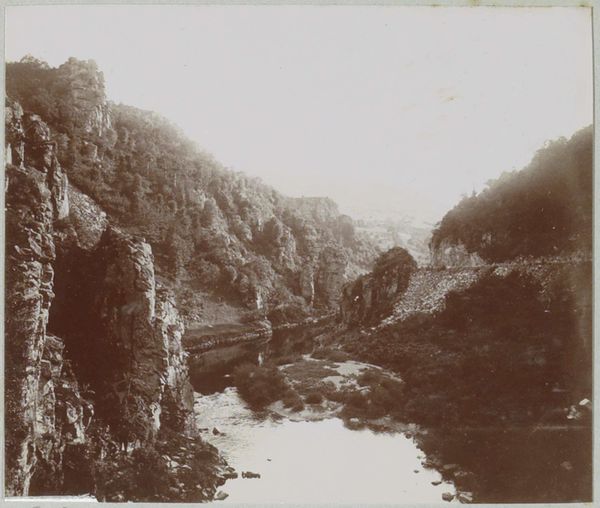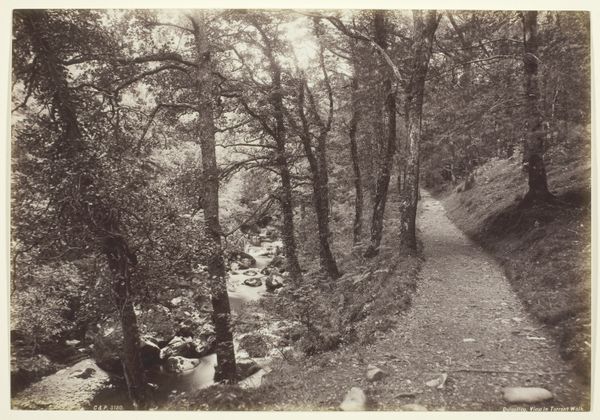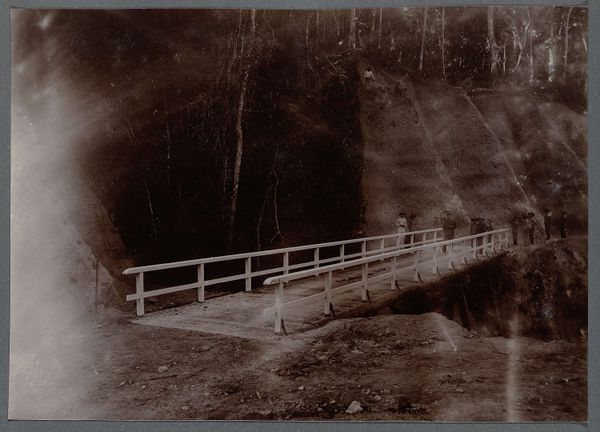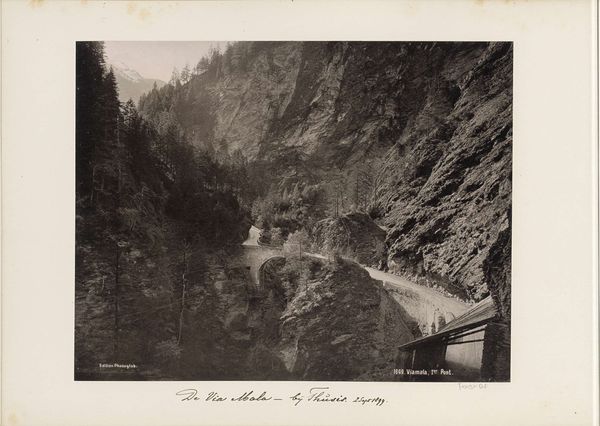
Dimensions: height 79 mm, width 110 mm
Copyright: Rijks Museum: Open Domain
Curator: Let's discuss this striking 1903 photograph by Delizy, currently housed in the Rijksmuseum. It’s entitled "Two Women by a Tunnel on the Route de la Grande Chartreuse." Editor: My initial impression is one of almost monochromatic solemnity. The tones are muted, the tunnel opening a stark void, and the two figures… diminished by the scale of nature. There’s a definite sense of journey and perhaps vulnerability. Curator: Exactly. The photograph appears to be created with watercolor on a silver gelatin printing-out paper. Given that it is 1903, we might think about who would commission a photograph such as this, given its relative rarity. Is it possible to think of this photographic rendering of a known beauty spot being created for wealthy, landed gentry who want to capture the memory and location on a newly popularized route for travel and leisure? Editor: Interesting! We should explore the socio-economic context more, specifically who is travelling for leisure at this moment in history. Who is going to see Grande Chartreuse? But thinking about that monochromatic tonality… It renders the rock face almost sculptural, monumental. And note the contrast, the deep shadowy tunnel offering an escape into the unknown. The two women almost disappear into it. How might gender roles impact women's accessibility to travel? Curator: The very process of albumen printing, popular at the time, involved coating paper with egg whites before exposure. We should note the laborious quality, often relegated to women and children, creating what might be taken now as fine art! And, importantly, to consider photography as it existed then: often used for documentation, mapping terrains, producing catalogues, popular science; never necessarily imagined as fine art at all. Editor: Which then challenges our own historical understanding and reception of images like this! Delizy gives us not just a depiction of place, but the negotiation of social identities, specifically women's roles within evolving class and leisure structures in 1900s France. Perhaps their journey—literal and metaphorical—through this tunnel symbolizes their own passage through societal constraints. Curator: I find myself drawn to the textures—the rough-hewn rock, the smoother surface of the road itself. This highlights photography's early potential in depicting topography and location while underscoring labor and process in artistic movements across visual media. Editor: Indeed, by examining gender and photographic techniques of the period, a simple photograph opens into a complex field of historical and theoretical investigation. It makes us wonder what new stories future generations will find in these still images.
Comments
No comments
Be the first to comment and join the conversation on the ultimate creative platform.
